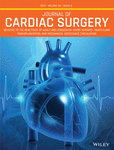Outcomes after heart transplantation in sensitized patients bridged with ventricular assist devices
This study was presented at the 38th annual meeting of the International Society for Heart and Lung Transplantation, 8 April 2018, Nice, France.
Abstract
Objective
Sensitization has been associated with worse outcomes following heart transplantation (HTx). The use of ventricular assist devices (VAD) is a risk factor for the development of sensitization. We investigated the impact of left ventricular assist devices (LVAD) and sensitization in HTx recipients.
Methods
We queried the UNOS database for all heart transplants performed from January 2000 through December 2016. Patients were considered highly sensitized and included if panel-reactive antibody (PRA) activity was 25% or higher. Patients were separated by pretransplant LVAD utilization and subgroup analysis was performed by device type (HeartMate II or HeartWare). Outcomes included Kaplan-Meier survival and episodes of rejection within 1 year of HTx.
Results
Of 18 009 recipients, 2434 (14%) were highly sensitized. 1055 (43.3%) were bridged with a VAD. In multivariate analysis, LVAD use did not impact 1-year (hazards ratio [HR], 1.30; P = 0.052) or 5-year survival (HR, 1.18; P = 0.112) in highly sensitized recipients. Furthermore, episodes of rejection were not affected by LVAD status (P = 0.765). Of the 1055 sensitized LVAD-bridged transplant recipients, 624 (59%) were implanted with a HeartMate II and 99 (9.4%) were bridged with a HeartWare device. In multivariate analysis, no differences were observed in 1-year survival (HR, 0.86; P = 0.664), 5-year survival (HR, 1.35; P = 0.209), or episodes of rejection (P = 0.497).
Conclusions
The use of ventricular assist devices did not impact survival or rejection within 1 year of HTx in highly sensitized patients. Highly sensitized recipients have similar outcomes regardless of prior LVAD support or type of LVAD used as a bridge to transplantation.
CONFLICT OF INTERESTS
The authors declare that there are no conflict of interests.




